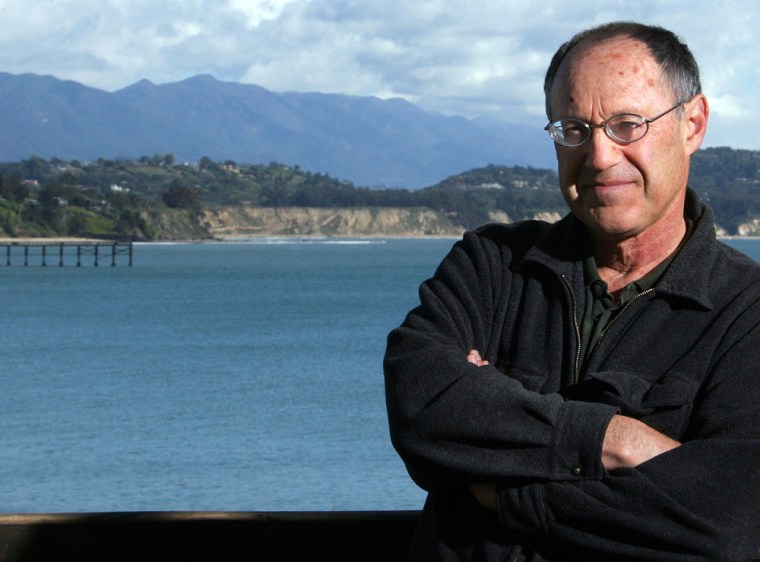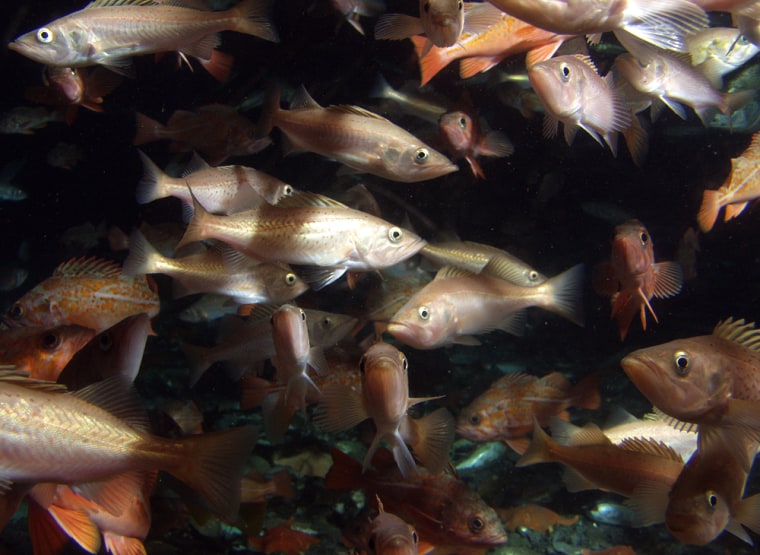Marine biologist Milton Love drives a hybrid car, displays a banner of leftist icon Che Guevara on his laboratory wall — and has backing from big oil.
The reason is his finding that long-maligned oil platforms off California's Central Coast may be a haven for overfished stocks of groundfish.
The research is good news to oil executives, who are looking for reasons not to pay hundreds of millions of dollars to remove the platforms once the oil stops flowing.
Environmentalists say oil companies are hiding behind fish to escape their obligation to remove the rigs.
"Just because fish are there doesn't mean the platform constitutes habitat," said Linda Krop, an attorney for the Santa Barbara-based Environmental Defense Center. "That's like taking a picture of birds on a telephone wire and saying it's essential habitat."
The 27 platforms — skeletal-looking structures that house dormitories, offices and massive pumps — were installed over the last four decades and now produce 72,000 barrels of oil daily. Environmentalists and coastal residents despise them for disrupting the ocean's natural ecology and otherwise flawless coastal views.
Federal law requires oil companies to remove the platforms when operations are complete, though no one knows whether it will be years or decades before deposits under the sea floor run out.
Oil companies already are pressing state and federal officials to keep the rigs in place, citing Love's finding that platforms provide homes for bocaccio, cowcod and other fish. Love said many fish adopt platforms because they can't reach decimated natural reefs where they once thrived.
Federal agency weighs
Claims that platforms help fish haven't convinced federal officials. The National Oceanic and Atmospheric Administration said recently it might eventually consider letting platforms remain as fish habitat, but wanted to know more about their effects on marine life.
Since the 1950s, when heavy fishing began in the region, some species have been reduced to 6 percent of their previous numbers, according to Love. Overfishing has led to an economic disaster, leading some fisheries to close and causing the groundfish fleet to shrink by a third.
If the platforms were removed, environmentalists contend, fish would return to the natural reefs that hug Southern California's coast: boulder fields and low-lying, rocky outcroppings that can host sponges and other invertebrates.

Love, a UC Santa Barbara researcher, films fish in a submarine that hums around the platforms and then counts them in his lab.
His findings: Large fish prefer crevices at the platforms' base, while smaller ones like the middle section above their predators.
At Platform Gail, which stands in 739 feet of water nine miles off the Ventura coast, Love found what he believes to be the highest density of two species of overfished rockfish in Southern California.
Love stresses that his research doesn't draw conclusions about whether the platforms should be removed. What's irrefutable, he says, is that some platforms are surrounded with fish packed as tightly as "cocktail wieners in a can."
Industry funds some research
Love gets about 80 percent of his research money from the government, and the rest from the California Artificial Reef Enhancement Program, a Sacramento nonprofit group funded almost entirely by oil companies. The group has contributed about $100,000 a year to Love's research since 1999, executive director George Steinbach said.
Love says no amount of oil industry money can sway his research — fish either cluster at the platforms or they don't. And because they do, his personal view is that the rigs should stay in place, cut below the waterline so that ships can pass safely over them.
"It's immoral to kill large numbers of animals anywhere on earth, and if you remove a platform you'll kill many millions of animals," he says.
Proposals to keep the platforms are modeled on programs in the Gulf of Mexico, where more than 200 rigs have been converted into artificial reefs either by toppling them or by cutting them below the waterline.
Krop, the environmental lawyer, says rig-to-reef conversions make more sense in the Gulf of Mexico because the waters there have a mud bottom, not natural reefs.
Converting platforms between Long Beach and Point Conception north of Santa Barbara could be $600 million to $1 billion cheaper than removing them, Steinbach said. In exchange for letting the rigs stay, Steinbach said, oil companies would contribute up to half their savings to state conservation programs.
Widespread opposition from environmentalists and residents has killed legislation that would have allowed such a deal.
